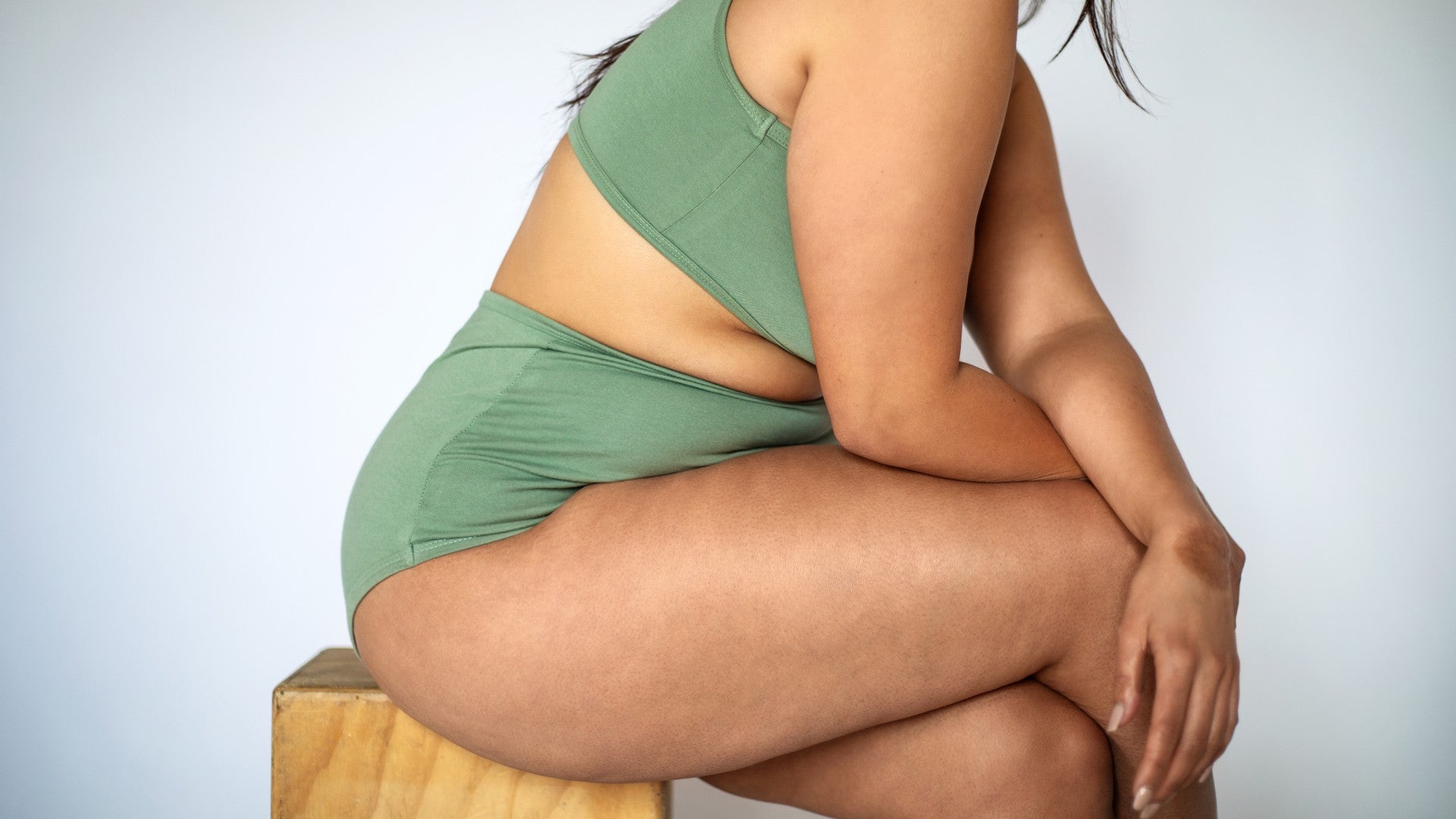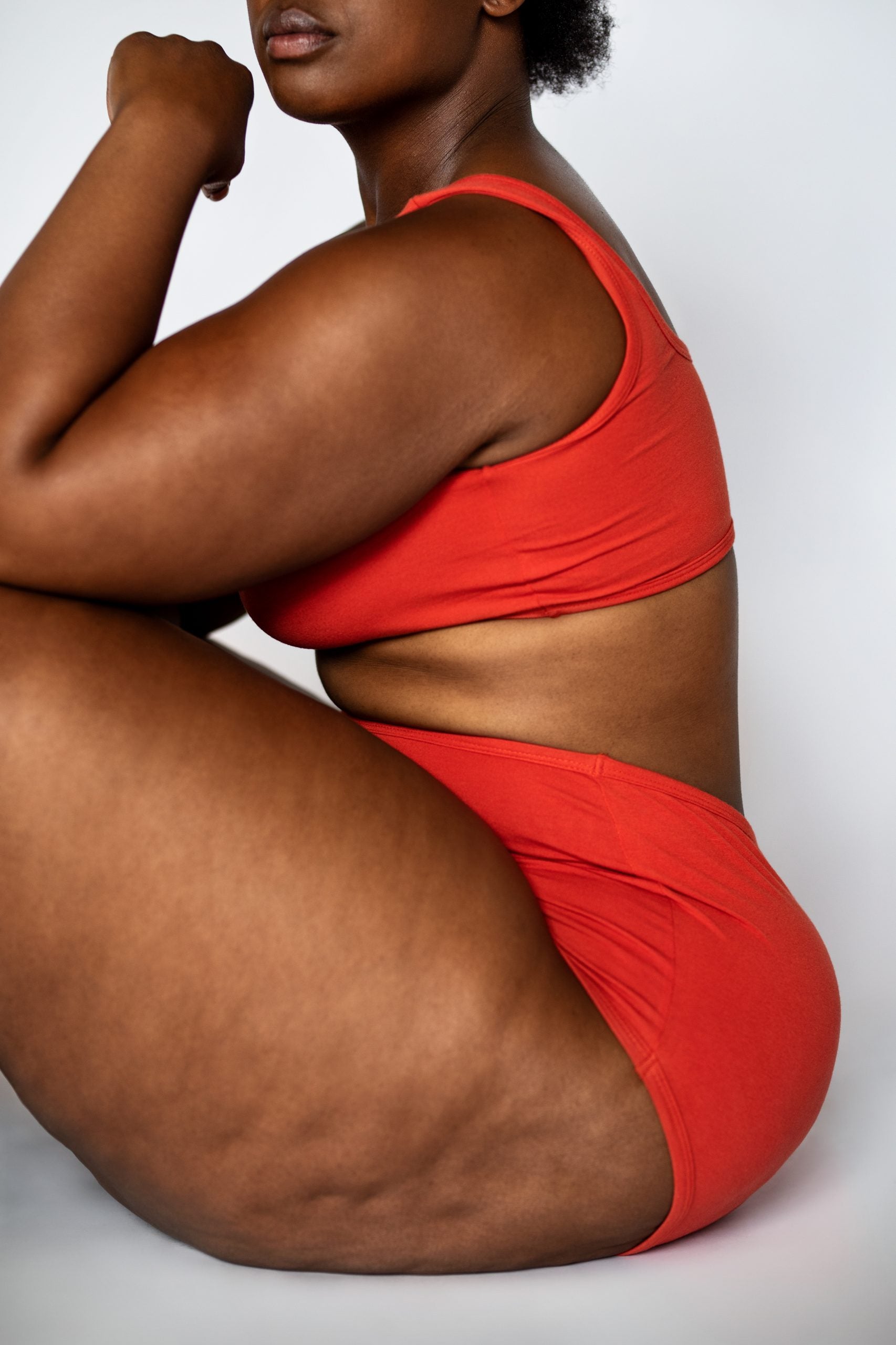
It’s short shorts season again, which means it’s also the season of get-thin-quick products for women hoping for a certain look. It’s also the time we see the dry brushes come out and the ice cream go to the wayside in an attempt to fight that dreaded skin condition most women have—cellulite.
Nine out of 10 women have cellulite. And according to a 2020 Harris Poll provided by Endo Aesthetics of more than 2000 U.S. women, 60 percent of them feel like it’s their fault that they have cellulite. Nearly 80 percent of women polled said they wished their doctor would tell them about treatment options that target the root cause.
So we reached out to Michelle F. Henry, M.D., board certified dermatologist at Laser & Skin Surgery of New York and Clinical Instructor of Dermatology at Weill Medical College, to bust the myths that many of us have when it comes to cellulite. She broke down what all that “dimpling” really is, and identified the first injectable treatment that actually works to get rid of it.
Myth 1: You only get cellulite when you’re older?
“Absolutely not!” says Henry. “Personal story myself, I’ve had it since I was probably in my early twenties or late teens. You see it after puberty so you can get it when you’re younger as well. I think a lot of people associate it with pregnancy and weight gain. And so I think that because there’s this association with pregnancy and weight gain and we tend to gain weight a little bit more when we get older, women gain weight when they’re pregnant, I think that association makes us think that it’s something that we can’t see when we’re in our twenties and haven’t had children.”
Myth 2: Skinny and fit women don’t get cellulite.
“Cellulite is not caused by fat alone. I have really skinny, very fit [clients] who have it,” explains Henry. “Fat can worsen cellulite, but cellulite is caused by many things and one of the primary causes is structural. You have these little fibrous bands, these little septae, that kind of anchor down the skin to the depth. Age can make them more rigid, but it’s mainly genetics. And the more rigid they are, the more they pull down on the skin and they tether the skin. It’s kind of like when you look at a mattress. You know those little buttons on a mattress that tether the mattress down and then you see those dimples? That’s exactly what’s happening with cellulite.”

Myth 3: You can drink cellulite away with water.
“I wish it was true,” Henry says with a laugh. “There’s some swelling, like edema, in that area [where there’s cellulite]. That little swelling makes it look puffier. Pushing the fluid out of there would make it look better, so in theory, drinking more water may not actually make it look better. You’ll see some superficial lasers that claim to treat cellulite just temporarily. All they’re really doing is changing that microcirculation so that you don’t get that swelling. So while I would not recommend dehydrating yourself to look better either, hydrating more is not going to make the problem any better.”
Myth 4: Eating pizza and ice cream and fatty foods makes cellulite worse.
Henry says it’s not the food specifically. “Because that little tether is fixed, when you gain weight, it’s not necessarily going to stretch as easily as the rest of your skin,” she explains. “If you gain weight the anchor is going to be more pronounced. It’s like if you just took a mattress and stuffed more stuffing in it, now all the little divots are going to be deeper because those divots didn’t change, but you put more fat around them. But then we have some women that actually look worse when they lose weight because now their skin is loose and they have these tethers. So it’s a really complex thing. But the pizza—that will not cause that cellulite.”
Myth 5: Dry brushing gets rid of cellulite.
“It doesn’t work,” Dr. Henry confirms. “And I think what it’s doing is that same idea of changing that little circulation in that area. I think if people are seeing anything, they may be seeing some improved skin quality. But they also might be just be pushing out some of that swelling, improving the circulation a little bit, so temporarily, for that day it may look a little bit better.”
Myth 6: There’s no effective treatment for cellulite.







This isn’t true according to Henry. “There was Cellulaze, which worked,” she says. “It uses a laser to break up the bands. But it was a big procedure and people of color would end up with all these dark marks because you had to invade the skin. So on Black skin I would never do it because you were trading your cellulite for a bunch of scars. And there’s Cellfina, which isn’t as aggressive as Cellulaze. It can treat by actually cutting the bands, but it’s going to cause a scar too. If you have to introduce a blade into Black and brown skin, you’re creating a scar. This new product [QWO] from Endo Aesthetics is in a completely new category. It’s a new drug [but] it’s a safe drug. This is going to give you a more permanent solution and it’s an injectable that’s FDA approved for the buttocks. I love this product. They’ve figured out the right percentage [of clostridium] and they came up with a great protocol on how to inject it. I’m super excited about it.




